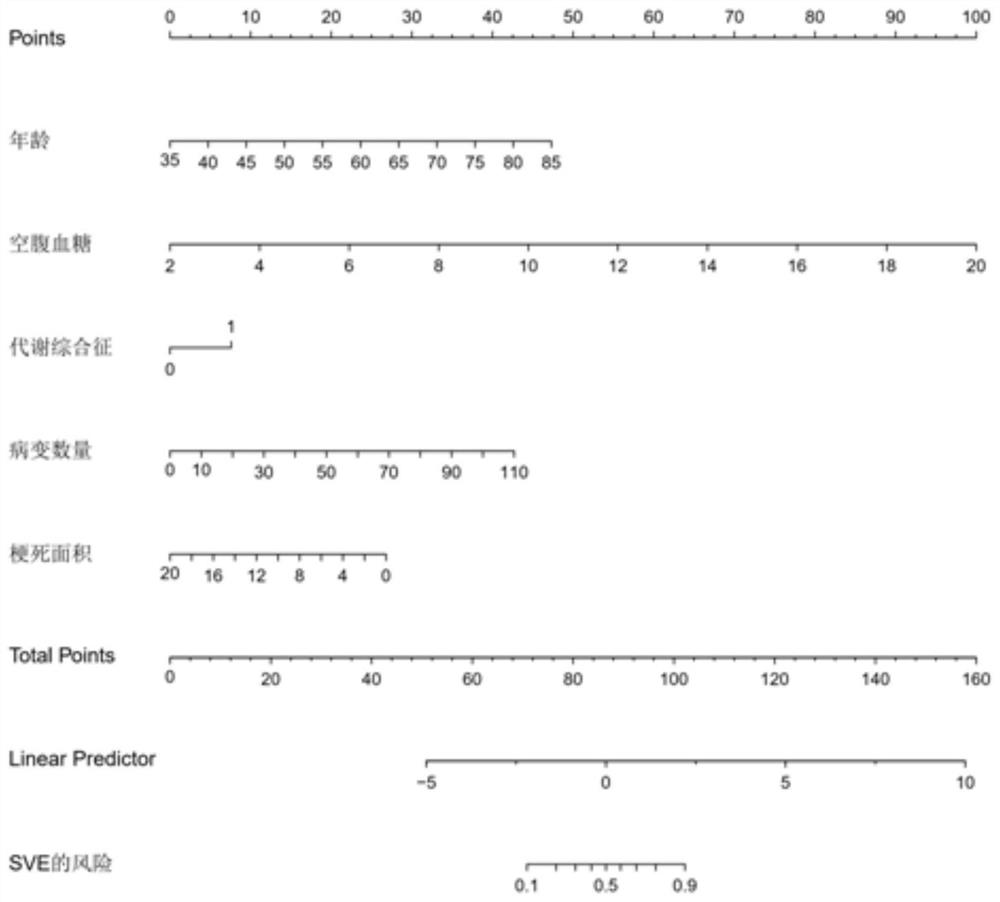Index score-based prediction model for MIS (Minor Ischemic Stroke) patient
A technology for ischemic stroke and prediction model, applied in the medical field, can solve the problems of lack of injury, cognitive abnormality of executive function, undiscovered and other problems, and achieve the effect of increasing accuracy and good index analysis ability
- Summary
- Abstract
- Description
- Claims
- Application Information
AI Technical Summary
Problems solved by technology
Method used
Image
Examples
Embodiment 1
[0036] refer to figure 1, a predictive model for patients with mild ischemic stroke based on index scores, including the following steps:
[0037] S1. Collect clinical data and perform preprocessing, and use the collected and preprocessed clinical data to construct the inclusion criteria for MIS patients;
[0038] S2. Collect basic data and record and store;
[0039] S3. Follow up the SVE situation of the personnel whose basic data are collected;
[0040] S4. Statistical construction of predictive model: use the multi-factor Logistic regression method to establish a predictive model, and select the best model parameters according to the minimum Akaike information standard, calculate the odds ratio and 95% confidence interval, draw the nomogram of the predictive model, and pass The nomogram obtained the predicted results.
[0041] The analysis shows that this predictive model for patients with mild ischemic stroke based on index scores solves the problem of low accuracy in p...
PUM
 Login to View More
Login to View More Abstract
Description
Claims
Application Information
 Login to View More
Login to View More - R&D
- Intellectual Property
- Life Sciences
- Materials
- Tech Scout
- Unparalleled Data Quality
- Higher Quality Content
- 60% Fewer Hallucinations
Browse by: Latest US Patents, China's latest patents, Technical Efficacy Thesaurus, Application Domain, Technology Topic, Popular Technical Reports.
© 2025 PatSnap. All rights reserved.Legal|Privacy policy|Modern Slavery Act Transparency Statement|Sitemap|About US| Contact US: help@patsnap.com

